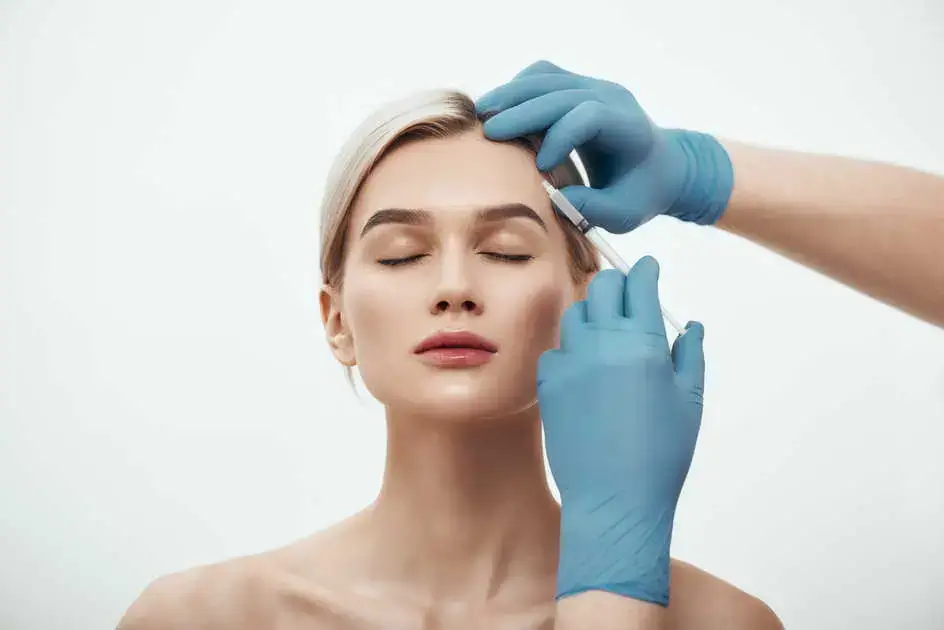What is laser hair removal?
Laser hair removal is a cosmetic procedure that uses laser technology to remove unwanted hair from the body. It is a popular method of semi-permanent hair reduction that can be performed on various body parts, including the face, legs, arms, underarms, bikini area, and back.
During the procedure, a highly concentrated beam of light, emitted by a laser device, targets the pigment (melanin) in the hair follicles. The heat generated by the laser breaks the hair follicles, inhibiting their ability to grow new hair. The surrounding skin is minimally affected because the laser selectively targets the dark, coarse hair while leaving the surrounding skin unharmed.
Remember that laser hair removal is not a permanent solution, as it typically significantly reduces hair growth rather than complete removal. Multiple treatment sessions are needed to get the desired results since hair grows in different phases, and the laser can only effectively target hair in the active growth phase.
What causes unwanted hair growth?
Unwanted hair growth, also known as hirsutism, can be caused by various factors. Here are some of the common causes:
- Hormonal Imbalances: Hormonal disorders are a frequent cause of unwanted hair growth. Conditions such as adrenal gland disorders, polycystic ovary syndrome (PCOS), and certain tumors can lead to an imbalance in hormones like androgens (e.g., testosterone); this can result in excess facial and body hair development in areas typically associated with male-pattern hair growth.
- Genetics: Unwanted hair growth can also be influenced by genetic factors. Some individuals may have a genetic predisposition to develop excess hair in certain areas, even without any underlying medical condition.
- Medications: Certain medications can cause increased hair growth as a side effect. For instance, anabolic steroids, anticonvulsants, and certain hormone medications may stimulate hair growth in unwanted areas.
- Ethnicity: Hair growth patterns can vary among different ethnic groups. People with Mediterranean, Middle Eastern, or South Asian ancestry may have a higher tendency for increased hair growth.
- Age: Hormonal changes that occur with age, such as during puberty or menopause, can lead to alterations in hair growth patterns. For example, some women may experience increased facial hair during menopause due to hormonal fluctuations.
- Medical Conditions: In rare cases, conditions like tumors or adrenal gland disorders can cause excessive hair growth.
It’s important to note that unwanted hair growth can be a source of distress for individuals, and seeking medical advice from a healthcare professional or dermatologist is recommended to determine the underlying cause and explore appropriate treatment options. There are several cases where laser hair removal can address this issue at its best.
Is laser hair removal healthy for everyone?
Although generally safe for most individuals, laser hair removal may not be suitable or effective for everyone. The success and safety of the procedure can depend on factors like skin type, hair color, and the specific laser technology used. Here are some considerations:
- Hair Color: The laser is most effective in targeting dark, coarse hair since it absorbs more light. Light-colored hair, such as blonde, red, gray, or white, contains less melanin and may not respond as well to laser treatment. In some cases, additional treatment options like electrolysis may be recommended for individuals with lighter hair colors.
- Skin Type: Laser hair removal tends to be most effective on individuals with light skin and dark hair. The laser targets the melanin in the hair follicles. People with darker skin tones have more melanin in their skin, making it challenging for the laser to differentiate between the hair follicles and surrounding skin, potentially increasing the risk of skin damage. However, advancements in laser technology have made it possible to treat a broader range of skin types.
- Medical Conditions and Medications: Certain medical conditions and medications may interfere with the safety and effectiveness of laser hair removal. For example, if you have a skin condition, active infections, or are taking medications that increase light sensitivity, laser hair removal may not be advisable. It’s essential to inform the practitioner about any medical conditions or medications you currently use before undergoing the procedure.
- Pregnancy: Laser hair removal is generally not recommended during pregnancy due to hormonal changes and potential risks to the developing fetus. It’s best to consult a healthcare professional to discuss the safety considerations during pregnancy or breastfeeding.
Does laser hair removal have risks?
Laser hair removal does carry some risks and potential side effects. However, when performed by a qualified professional or under the supervision of a dermatologist, the stakes are generally low. Here are some potential risks and considerations:
- Skin Irritation: Following laser hair removal, it’s common to experience temporary skin irritation like mild discomfort, redness, and swelling in the treated areas. These effects usually subside within a few hours to a few days. Applying soothing creams or cold packs can help alleviate any pain.
- Pigment Changes: In rare cases, laser hair removal may cause temporary or, in infrequent instances, permanent changes in skin pigmentation. Lighter or darker patches of skin, known as hyperpigmentation or hypopigmentation, may occur. This risk is higher for individuals with darker skin tones or those exposed to the sun without proper sun protection before or after treatment. It’s crucial to avoid sun exposure and use sunscreen on treated areas.
- Burns and Blisters: Improper use of lasers or incorrect settings can cause burns or blisters on the skin. This risk is minimized when the procedure is performed by a trained professional who selects appropriate laser parameters for your skin type and hair color. Cooling gels or numbing creams may be applied before treatment to help protect the skin.
- Eye Injury: Laser hair removal involves using intense laser light, which can harm the eyes. The patient and the practitioner should always wear protective eyewear to prevent eye injury.
- Infection: Although rare, there is a slight risk of disease associated with laser hair removal. It’s essential to ensure that the treatment area and equipment used are properly sterilized and to follow post-treatment care instructions to minimize the risk of infection.
What are some tips to prevent unwanted hair growth?
While preventing unwanted hair growth altogether may not be possible, some methods can help manage and reduce hair growth. Here are some tips:
- Laser Hair Removal: Laser hair removal, as mentioned earlier, offers semi-permanent hair reduction by targeting hair follicles with laser technology. It can be an effective option for long-term hair reduction, but multiple sessions are usually required for optimal results.
- Shaving: Regular shaving is a standard method to remove hair temporarily. It cuts the hair off at the skin’s surface and regrows relatively quickly. However, it can help maintain smooth skin in the short term.
- Waxing: Waxing involves removing hair from the root, providing longer-lasting results than shaving. It can be done at home or by a professional. Waxing pulls the hair out from the follicle, and with regular treatments, it may lead to slower regrowth over time.
- Tweezing: Tweezing is a manual method of hair removal where individual hairs are plucked out using tweezers. It is suitable for small areas or isolated hairs. While effective, it can be time-consuming for larger sizes.
- Depilatory Creams: Depilatory creams contain chemicals that dissolve the hair shaft, allowing easy removal. They are applied to the skin and then wiped off, taking the hair with them. These creams provide short-term results and may have a strong odor or chemical composition, so caution should be exercised.
- Electrolysis: This permanent hair removal method uses an electric current to destroy the hair follicles. It can be time-consuming as each hair follicle needs to be treated individually. Electrolysis is usually performed by a trained professional.
- Hormonal Management: In cases where unwanted hair growth is due to hormonal imbalances, managing the underlying hormonal condition can help reduce hair growth. Consulting with a healthcare professional or endocrinologist can guide hormonal management.
Some of these methods can cause skin irritation or discomfort, so following the instructions carefully and seeking professional advice is crucial.
You don’t need to suffer from frustrating unwanted hair growth with laser hair removal. Try it at SOSA Medical Aesthetics, as they use DiolazeXL and contact them now for a better hair removal experience!











